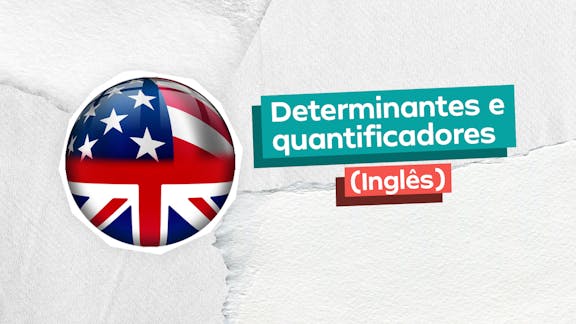Analisando-se aspectos linguísticos e estruturais do texto, constata-se que
The true potential of technology to change behavior
Technology could successfully change behaviours where decades of campaigns and legislation have failed.
With the quantified self already walking among us and the internet of things within easy reach, digital technology
is creating unprecedented opportunities to encourage, enable and empower more sustainable behaviours.
If we are to unlock the power of technology we must be more ambitious than simply digitising analogue
strategies or creating another communications channel.
The true potential of technology lies in its ability to do things that nothing else can do. In behaviour change
terms, the potential to succeed where decades of education programmes, awareness campaigns and product
innovation have failed; to make a difference where government policy and legislation has had limited impact.
Using behavioural insights, it is possible to highlight the bottlenecks, drop out points and achilles heels of
traditional behaviour change efforts — the reasons why we have failed in the past — and apply the unique
possibilities of technology to these specific challenges.
Overcoming our limitations
Luckily, the history of the human race is almost defined by its ability to invent stuff that bolsters its feeble
capabilities. That stuff is, of course, what we generically refer to as 'technology'. And in the same way that the
internal combustion engine and the light bulb allow us to overcome our relatively feeble powers of motion and
perception, so digital technology can be directed to overcoming our relatively feeble powers of reasoning, selfcontrol, motivation, self-awareness and agency—the factors that make behaviour change so difficult.
Herein lies the true potential of technology: not in the laboratory or the workshop, but in an understanding of
the behavioural dynamics that define the human condition, both generally and within the context of a specific
user-group, market segment or community.
Fonte: JOHNSON, Steven. Recognising the true potential of technology to change behaviour. Disponível em:<https://www.theguardian.com/sustainablebusiness/behavioural-insights/true-potential-technology-change-behaviour> . Acesso em: 23 ago. 2017. (Adaptado).
The true potential of technology to change behavior
Technology could successfully change behaviours where decades of campaigns and legislation have failed. With the quantified self already walking among us and the internet of things within easy reach, digital technology is creating unprecedented opportunities to encourage, enable and empower more sustainable behaviours.
If we are to unlock the power of technology we must be more ambitious than simply digitising analogue strategies or creating another communications channel.
The true potential of technology lies in its ability to do things that nothing else can do. In behaviour change terms, the potential to succeed where decades of education programmes, awareness campaigns and product innovation have failed; to make a difference where government policy and legislation has had limited impact.
Using behavioural insights, it is possible to highlight the bottlenecks, drop out points and achilles heels of traditional behaviour change efforts — the reasons why we have failed in the past — and apply the unique possibilities of technology to these specific challenges.
Overcoming our limitations
Luckily, the history of the human race is almost defined by its ability to invent stuff that bolsters its feeble capabilities. That stuff is, of course, what we generically refer to as 'technology'. And in the same way that the internal combustion engine and the light bulb allow us to overcome our relatively feeble powers of motion and perception, so digital technology can be directed to overcoming our relatively feeble powers of reasoning, selfcontrol, motivation, self-awareness and agency—the factors that make behaviour change so difficult.
Herein lies the true potential of technology: not in the laboratory or the workshop, but in an understanding of the behavioural dynamics that define the human condition, both generally and within the context of a specific user-group, market segment or community.
Fonte: JOHNSON, Steven. Recognising the true potential of technology to change behaviour. Disponível em:<https://www.theguardian.com/sustainablebusiness/behavioural-insights/true-potential-technology-change-behaviour>
Gabarito comentado
Alternativa correta: B
1) Tema central
A questão explora aspectos linguísticos: formação de palavras (morfologia), uso de auxiliares em negações e interrogativas, função de pronomes relativos e sentido de modais. Para resolver, é preciso reconhecer morfemas (prefixo/sufixo), identificar o verbo auxiliar na locução verbal e distinguir sentidos semânticos de modais.
2) Resumo teórico rápido
- Formação de palavras: prefixação (un- + word), sufixação (-ly, -ful). (Huddleston & Pullum, CGEL).
- Negação e interrogativa no inglês: utiliza-se o auxiliar apropriado. Para Present Perfect: auxiliar have/has -> negação: hasn't/has not; interrogativa: inversão Has …?.
- Modais: could = possibilidade/capacidade; should = conselho/obrigação leve — não são intercambiáveis sem mudança de sentido.
- that em “the factors that make…” funciona como pronome relativo restritivo, introduzindo a oração relativa.
3) Por que B está correta
A frase original usa Present Perfect: “legislation has had limited impact.” A negação natural mantém o auxiliar has: “legislation hasn’t had limited impact” (ou “has not”). Isso obedece à regra do Present Perfect (auxiliar have/has + particípio). Logo B descreve corretamente a forma negativa.
4) Por que as outras estão erradas
A — Incorreta: successfully é formado por sufixação (-ly, vindo de successful, que contém -ful); unprecedented tem prefixo un- e sufixo <-ed>. Não são ambos apenas prefixação.
C — Incorreta: interrogativa correta seria “Have campaigns and legislation failed?”, com inversão do auxiliar have, não *Do … has…?.
D — Incorreta: trocar could por should altera o sentido (possibilidade vs recomendação/obrigação), logo não é equivalente.
E — Incorreta: that aí é pronome relativo (introduz a oração que caracteriza os “factors”), não pronome demonstrativo.
5) Estratégias para provas
- Procure o núcleo verbal (auxiliar) para formar negações e perguntas.
- Separe prefixos/sufixos para identificar processos morfológicos.
- Analise o significado do modal antes de aceitar equivalências; modais são armadilhas frequentes.
- Identifique a função sintática de that (relativo vs demonstrativo).
Referências rápidas: Huddleston & Pullum, The Cambridge Grammar of the English Language; Cambridge/Oxford dictionaries (uso de modais e morfologia).
Gostou do comentário? Deixe sua avaliação aqui embaixo!






